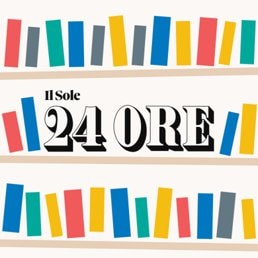The Beyeler Foundation inaugurates the 2022 exhibition season with the largest retrospective in Switzerland of the last 20 years on Georgia O’Keeffe (1887-1986), continuing after the Close Up exhibition, with a program aimed at paying homage to the great female figures of history of international art and culture.
Training
Georgia O’Keeffe is one of the great exponents of Modernism, known mainly for large-format paintings that portrayed nature as the macroscopic enlargements of the details of a flower. You have always obstinately refused to give a Freudian-style psychoanalytic interpretation to these works. Initially she approaches imitative realism following the current used as the didactic basis of the period, but soon departs from it influenced by the thought of Arthur Wesley Dow (who, like her, preferred an aesthetic attributable to Asian art), of the idea that one’s own imagination could be most effectively represented through the arrangement of lines and colors referring as a model to the Japanese system known as notan. But O’Keeffe also makes her own Kandinsky’s lesson that she invited to investigate as a “necessity” the inner vision of every artist that would allow a transposition of the spiritual world into art.
At this juncture he arrives at a first synthesis of his work that leads to abstractionism.
The meeting with Alfred Stieglitz
The meeting with Alfred Stiegliz was fundamental to her career and personal life, both found inspiration in each other, forming as underlined by scholars “a creative alliance”, she was not limited to being a muse or disciple but had the possibility of perfecting a completely personal artistic code by participating as a protagonist in the New York creative world that orbited around Galleria 291, a crossroads not only of the European avant-garde.

The works
Georgia O’Keeffe’s activity has been extremely fruitful, she has produced works ranging from abstraction to figuration, with a keen interest in straight photography. The subject she mainly looked at was nature and her landscapes, finding inspiration in the territory and forms of New Mexico, although she was also distinguished by singular representations of the skyscrapers of New York. The corpus of the exhibition consists of about 80 paintings and some works on paper (charcoal drawings and watercolors). Some of which come from private collections and therefore rarely exhibited. The halls from the Foundation recount the entire span of his production, over six decades, from the first expressions such as Early Abstraction, 1915, one of the artist’s abstract charcoal drawings who, by renouncing color, express sensations through lines and shapes, marking the break with the academic training received, passing through oil painting such as Blue and Green Music, 1919/1921, this work seems to focus on a detail of the subject formed by an assembly of forms attributable to the structure of the trees that overflows from the canvas. The title refers to the pictorial representation of sounds. “White Iris”, 1930, part of the monumental series in which the painter focuses on a detail of the flower, enlarging it exponentially, to allow others to grasp the spatiality that she herself saw. “The Shelton with Sunspots, NY”, 1926. The building that O’Keeffe painted the most in New York, at the time the tallest in the world that offered the artist the opportunity to remodel the different architectural perspectives in her art, reproducing the results of backlit photography in painting. “Leaf Motiv, No. 1”, 1924, from a private Swiss collection, an oak leaf in the foreground that represents all of O’Keeffe’s interest in the techniques of photography imprinted in the spatial results of the two leaves compared . To close the exhibition “Black Mobile with Hole”, 1954, by Alexander Calder, in this way we intend to celebrate the friendship between the two artists. In Calder’s sculptural solutions in which gravity and absence were weighed, O’Keeffe reviewed the American expanses she was so fond of, so much so that she decided to have one of her works of hers.
